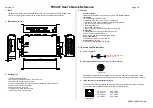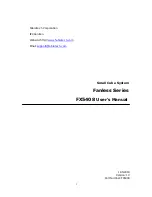
KTR-STOP
®
L light-xxx A-xx-xx
Operating/Assembly instructions
KTR-N
Sheet:
Edition:
445123 EN
9 of 21
2
Please observe protection
note ISO 16016.
Drawn:
2020-09-25 Shg/Wie
Replacing:
KTR-N dated 2019-11-21
Verified:
2020-11-05 Shg
Replaced by:
KTR supplies brake pads free from asbestos and lead only.
If requested, we will provide you with the corresponding certificates.
The brake pads are each adapted to the application and delivered accordingly.
They can be distinguished as follows:
•
organic material
•
powder metal
!
Brake pads are highly sensitive to grease and oil which means that they cannot be cleaned.
Brake pads having such kind of dirt need to be replaced and disposed of.
We would recommend to store the brake pads in their package as long as possible to pro-
tect them from any kind of dirt.
!
Brake pads which have worn off to the wear limit have to be replaced immediately. Make
sure to replace by original parts only.
!
If one half of the brake has to be mounted under pressure (without transport lock) for
reasons of space, please consult with KTR.
STOP
In order to avoid any injuries please always make use of proper lifting equipment.
In the pad retainers there are M12 threads for using lifting devices. The eye bolts should be disassembled after
assembly of the brake and stored in a safe place.
!
In order to avoid any damages on the brake, never twist a rope or any other lifting tool
around damageable components such as sensors, etc.
Before you start with the assembly please check if a sensor has been mounted.
Please remove it before assembly in order to avoid any damages.
!
It is not recommended to use steel plugs for venting.
•
Insert the brake pads (subassembly 2) fully into the brake.
If you want to insert brake pads after having assembled the brake, it is necessary to disas-
semble the pad retainers (component 1.23) for that purpose (chapter 5.1).
•
Mount the pad retraction sets (subassembly 3) by screwing the screw (component 3.1) with the disk (compo-
nent 3.4), pipe (component 3.2) and pressure spring (component 3.3) into the brake pad.
•
Hand-tighten the screw.
•
Assemble the sealing plug (component 3.5)
4
Assembly
4.3 Brake pads
4.4 Assembly of the brake







































